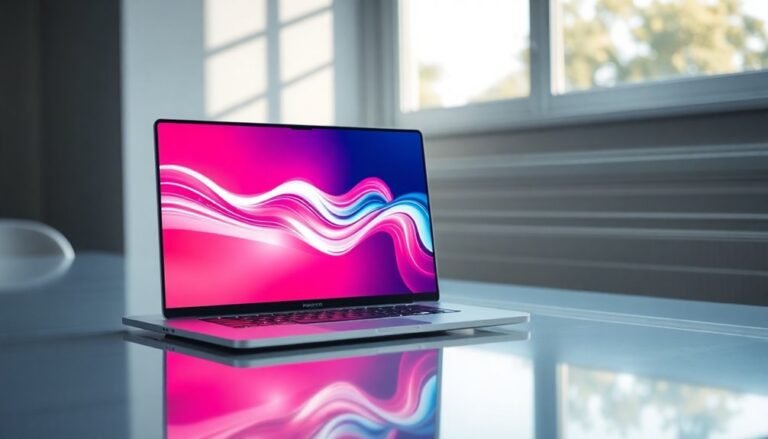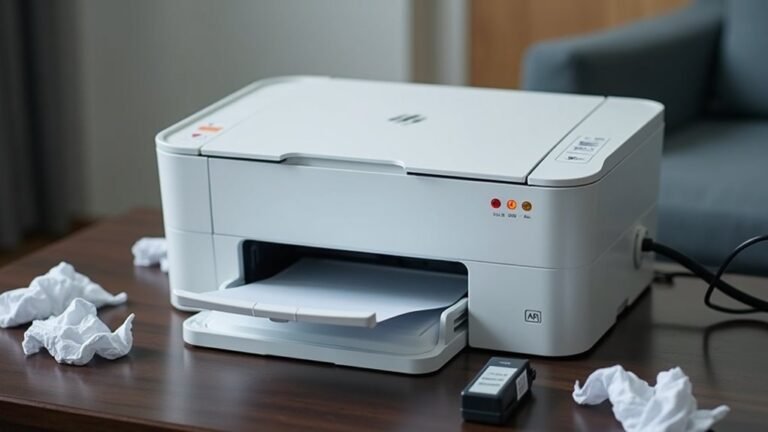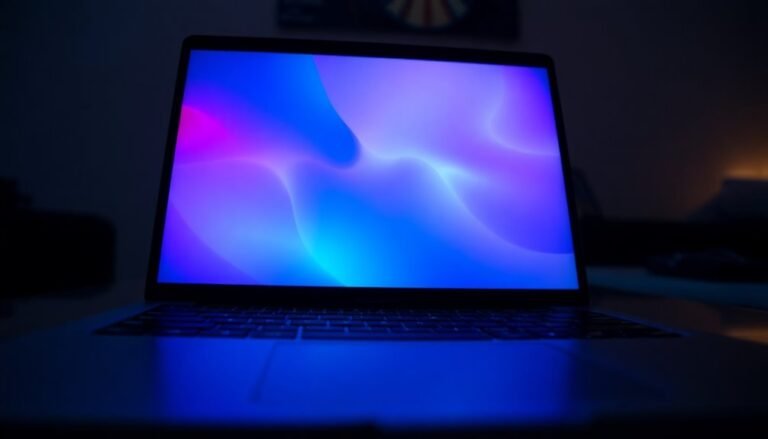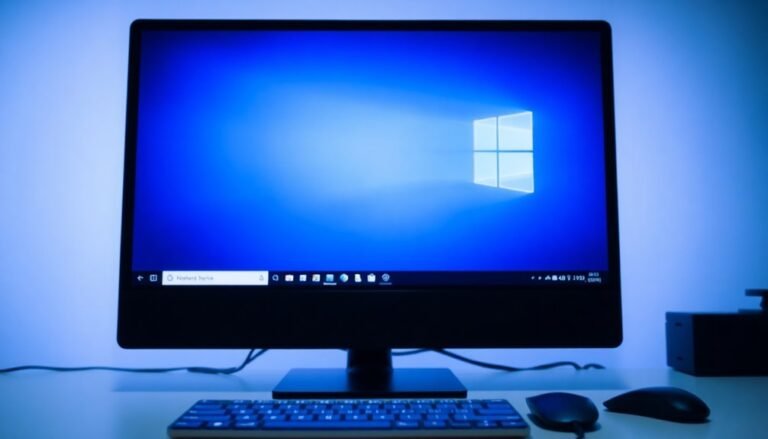Brightness Issue Windows 11: Fix Display Brightness Control

If you’re experiencing brightness control issues on Windows 11, start by checking your power settings and adaptive brightness features. Updating your display drivers through Device Manager can help ensure everything functions smoothly.
Consider resetting your display settings to default or using the Night Light feature for added comfort. If the brightness slider is missing or unresponsive, updating or reinstalling drivers can often resolve the problem.
Keep exploring for detailed steps to achieve a comprehensive fix.
Common Causes of Brightness Control Issues
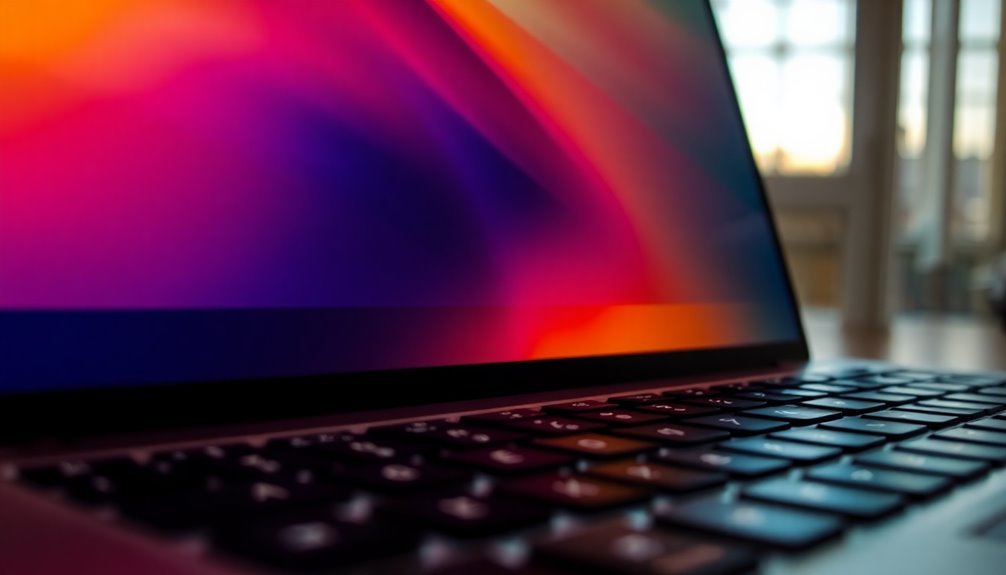
If you’re encountering brightness control issues in Windows 11, it’s essential to understand the common factors that could be causing the problem. One possible reason is that the adaptive brightness feature is enabled. This feature automatically adjusts your screen brightness based on the ambient light conditions, potentially overriding any manual adjustments you attempt to make.
Another factor to consider is whether your device is in battery saver mode or if you have a misconfigured power plan. These settings can restrict your brightness range, leading to difficulties in adjusting it to your preference. Additionally, rebooting the device can clear up minor glitches affecting settings, making it a simple first step to troubleshoot brightness problems.
Furthermore, Windows’ Night Light mode may also affect brightness levels and color temperature, which can conflict with your manual brightness settings. Corrupted system files or incomplete updates can introduce instability and impact brightness control functionality. If your device uses auto-brightness settings that rely on light sensors, these may not align with your desired adjustments either.
Lastly, if you’re using external displays, keep in mind that their independent brightness controls mightn’t match your system settings.
Driver-Related Fixes for Brightness Problems
If you’re facing brightness control issues in Windows 11, it’s crucial to address potential driver-related fixes to resolve the problem effectively.
Begin by updating your display adapter driver via Device Manager, which is a straightforward method to ensure you have the latest version necessary for optimal brightness adjustment. Updating display drivers can often resolve underlying issues affecting the brightness control.
If updating doesn’t solve the issue, try reinstalling your monitor driver manually to guarantee a clean installation. Download drivers directly from reputable sources like Intel or your specific device manufacturer, as these often include essential patches tailored for your hardware.
After installing new drivers, make sure to restart your computer to apply the changes properly.
Additionally, keep in mind that recent Windows updates can sometimes lead to brightness problems, so check that all updates are fully installed.
Lastly, consider resetting your display settings to their default values. This step can rectify any misconfigurations that might be negatively impacting your brightness control.
Always verify that your graphics devices are enabled and functioning correctly, as conflicts may arise if you have multiple graphics cards installed. Addressing these aspects can significantly improve your brightness control experience in Windows 11.
Adjusting Power and Display Settings
Adjusting your power and display settings in Windows 11 is essential for enhancing your brightness control and overall visual experience.
To begin, open the Settings app and navigate to System, then select Display. In this section, you’ll find the brightness slider located under the Brightness and color category, which allows for easy brightness adjustments. Simply drag the slider left to decrease brightness or right to increase it.
For those seeking to reduce eye strain, consider enabling the Night Light feature, which adds warmer tones to your display. Additionally, you can explore the “Change brightness based on content” dropdown menu to customize how adaptive brightness operates based on your screen content.
To further improve your display quality, calibrate your settings through the Control Panel, ensuring that brightness and contrast are accurate for your preferences.
Be aware that brightness adjustments can vary between battery and plugged-in modes, allowing you to optimize performance or prioritize power savings. Tailoring these display options can significantly enhance your comfort and visibility in different lighting environments, making your Windows 11 experience more enjoyable.
Troubleshooting Missing or Unresponsive Brightness Slider
If you’re experiencing issues with a missing or unresponsive brightness slider on your computer, it could be due to outdated drivers.
One effective solution is to update the Generic PnP Monitor driver via Device Manager, which may restore your brightness control functionality. If the problem continues, consider uninstalling and then reinstalling the monitor drivers, and don’t forget to update your graphics card drivers as well.
Another key step is to check the Group Policy Editor for any settings that could be disabling brightness control.
In addition, if there are conflicts with third-party software, it might be beneficial to uninstall those programs to resolve the issue.
Remember to always reboot your system after making these changes to ensure that all updates take effect and your brightness control is functioning properly.
User Reports on Brightness Control Symptoms
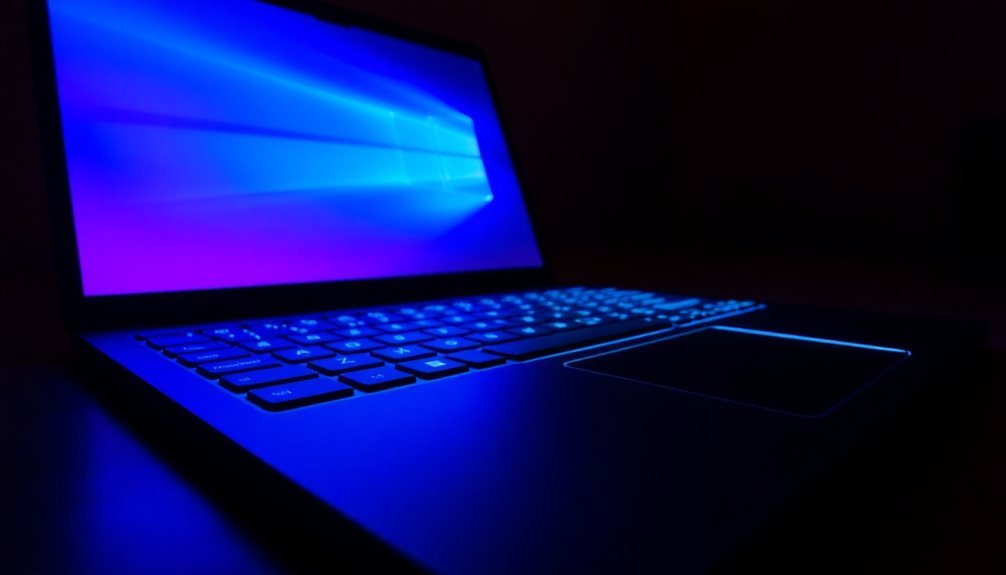
Many users are experiencing significant brightness control issues after updating to Windows 11, particularly with the Version 23H2 update. These problems include sudden and drastic changes in brightness, making it difficult to view screen content effectively.
Users have reported severe brightness fluctuations between 99% and 100%, resulting in screens that are either dim to the point of being unusable or excessively bright, which can lead to discomfort such as nausea and dizziness. This issue has been notably prevalent among Surface Laptop 4 users.
Moreover, some individuals have encountered unresponsive brightness sliders, which fail to adjust despite user attempts. This lack of responsiveness has become increasingly common following recent Windows updates.
Users often attribute these problems to driver compatibility issues, which may require manual reinstallation or even rolling back to previous drivers in order to restore proper control over brightness settings.
Attempts to remedy the situation by disabling adaptive brightness or utilizing external adjustment tools frequently fall short, leading to user frustration and concern regarding health and productivity during lengthy computer sessions.
If you’re facing brightness control challenges on Windows 11, it’s essential to check for driver updates and consider troubleshooting options for better display management.
Preventive Measures for Brightness Issues
To effectively address brightness issues on your display, implementing preventive measures is essential. Start by turning off auto brightness features in your device’s settings. Navigate to Settings > System > Display and disable options such as “Change brightness automatically when lighting changes” and “Change brightness based on content.” This ensures your display settings remain consistent at all times.
Additionally, check your GPU control panel, such as the NVIDIA Control Panel, for any adaptive brightness settings and make sure to disable those as well. This step helps in preventing any unexpected changes in brightness linked to graphics settings.
Next, adjust your Power & battery settings to prevent automatic brightness reduction. Take a moment to review the advanced power settings and confirm that your power plans don’t include any automatic adjustments that could impact brightness levels.
For quick and manual adjustments, utilize the brightness controls available in the Windows Settings app or use the designated hardware function keys on your keyboard.
Lastly, regularly updating your display drivers and firmware is crucial to avoiding any compatibility issues related to brightness control features. By monitoring and managing these settings regularly, you can create a stable and reliable display environment, ensuring optimal visibility and performance for your device.
Step-by-Step Guide for Updating Drivers
Updating your display drivers is essential for fixing brightness issues in Windows 11. To begin, utilize Windows Update, which automatically searches for and installs system driver updates.
Navigate to “Settings,” select “Update & Security,” and click on “Check for optional updates” to find the latest display drivers.
If using Windows Update doesn’t resolve the brightness problem, try Device Manager. Right-click on your display adapter, select “Update driver,” and then choose the option to search automatically for updated software.
For more precise control over your drivers, visit your manufacturer’s website to download the correct drivers tailored to your specific model and Windows version.
Alternatively, you may consider using third-party tools such as EaseUS DriverHandy. This software efficiently scans, backs up, and reinstalls drivers, making the process easier.
After you’ve updated your drivers, be sure to restart your computer to implement the changes. Following these steps can ensure your display drivers are functioning optimally, effectively addressing annoying brightness issues in Windows 11.
Configuring Power Plans for Optimal Brightness
While optimizing power plans in Windows 11, you have the ability to significantly adjust your screen brightness settings, enhancing both performance and battery life effectively.
Windows 11 features three primary power plans: Balanced, Power saver, and High performance. Each of these plans is designed to optimize energy consumption in different ways. The Power saver mode reduces brightness to extend battery life, whereas High performance mode increases brightness for superior visual clarity.
To select your desired power plan, you can easily navigate through the Control Panel or simply click on the battery icon in the taskbar. For users seeking greater customization, consider creating a bespoke power plan. This allows you to configure brightness settings based on your unique usage scenarios, making it a flexible option for every situation.
To fine-tune your settings, make sure to access “Change advanced power settings” within your selected power plan. Here, you can modify features like adaptive brightness to suit your preference. By confirming these adjustments, you ensure they take effect seamlessly.
Customizing your power plan will help achieve the ideal balance between a vibrant display and efficient energy usage, ultimately enhancing your Windows 11 experience. Make your device work for you while enjoying optimal brightness settings tailored to your needs.
Exploring Potential Hardware Problems

If you’re experiencing brightness issues in Windows 11, a variety of hardware problems could be the root cause.
It’s important to investigate these possible factors:
- Display Adapter Issues: Faults in your GPU can negatively impact brightness control functionality, leading to inconsistent display performance.
- Connection Problems: Loose or damaged cables—whether internal within your laptop or external to your monitors—may hinder the transmission of brightness signals.
- Driver Compatibility: Using outdated or incorrect graphics drivers could result in erratic brightness changes, such as sudden jumps or unexpected translucency effects.
- Firmware Settings: An outdated BIOS or UEFI can interfere with command signals that manage brightness, potentially causing issues.
Common symptoms of hardware-related defects include flickering screens, lack of response to brightness adjustments, and fixed brightness levels.
To diagnose these issues, check your Device Manager for any disabled display devices.
If you suspect a problem, uninstalling and reinstalling your display adapter and monitor drivers might help restore proper communication between hardware components and fix the brightness problems you’re experiencing.
Utilizing Manufacturer Tools for Enhanced Control
After identifying and resolving any potential hardware issues, you can optimize brightness control on your Windows 11 devices by utilizing manufacturer-specific tools.
Many leading brands like Dell, HP, Lenovo, and ASUS provide proprietary software that enhances brightness and color settings beyond the default options available in Windows. These utilities often support DDC/CI (Display Data Channel/Command Interface), enabling direct management of brightness and contrast for external monitors.
By using these advanced tools, you can schedule adjustments, calibrate ambient light sensors, and maximize visibility based on your environment. Features often include multi-monitor management, allowing for easy synchronization of brightness levels across several displays.
Moreover, these manufacturer tools typically facilitate quicker, more responsive adjustments that are tailored to your specific hardware configuration.
If you encounter issues with the standard Windows brightness slider, leveraging these manufacturer-specific tools can significantly enhance your user experience.
Be sure to check for DDC/CI support and keep your drivers updated regularly to ensure optimal performance.
Frequently Asked Questions
Can I Use Third-Party Software to Adjust Brightness?
Yes, you can use third-party software to adjust brightness. Tools like Twinkle Tray and Monitorian offer easy adjustment for multiple monitors, provided your hardware supports DDC/CI protocol. They enhance your brightness control experience seamlessly.
How Do I Reset Windows 11 Display Settings?
To reset your Windows 11 display settings, right-click the desktop, select Display settings, adjust resolution and scale to recommended values. Explore advanced settings for further adjustments. It’ll refresh your display’s appearance dramatically.
Will a System Restore Fix Brightness Issues?
Yes, a system restore can fix brightness issues if recent changes caused them. It rolls back system settings, potentially resolving conflicts or driver problems. However, it won’t help if hardware failures or permanent updates are involved.
Does My Laptop Battery Affect Brightness Control?
Yes, your laptop battery greatly affects brightness control. For instance, higher brightness can drain your battery up to 20% faster. Lowering brightness conserves battery life, allowing you to enjoy extended usage between charges.
Can I Manually Adjust Brightness in BIOS Settings?
You can manually adjust brightness in BIOS settings if your system supports it. Restart your device, enter BIOS using the designated key, and look for brightness options under the display or advanced sections.
Conclusion
Now that you’ve unraveled the mysteries behind brightness control on Windows 11, you’re ready to reclaim your screen’s brilliance. Whether you’ve navigated driver updates, tweaked power settings, or addressed hardware concerns, each step brings you closer to a vibrant display. Picture your workspace, illuminated with the perfect glow, enhancing your productivity and comfort. Don’t settle for dim frustration; embrace these solutions and let your visuals shine bright like a clear morning sky.
